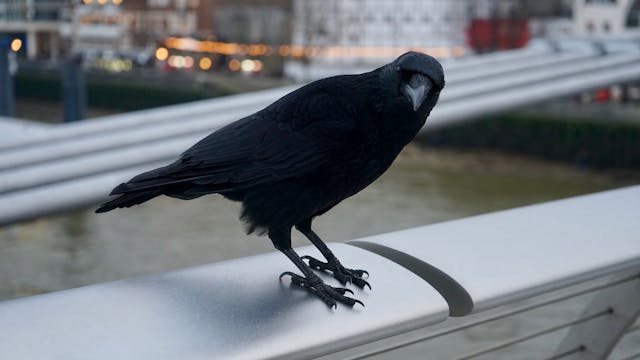
How do cities affect animal evolution? Animals have to evolve to survive in cities in numerous ways. They have to cope with the heat, the buildings, vehicles, different food sources, and many other things as well.
In the history of our planet, urbanization is a relatively recent concept. The first cities appear to have sprung up in about 8000 BC. A good example is Çatalhöyük, which was founded in approximately 7500 BC in what is now Turkey. It was not a city as we would recognize one today, but it made sense in the evolution of settlements. It didn’t have streets like we do today, but was made of a lot of rooms around courtyards, connected by alleys. This made sense because it was the next progression up from villages. Once we learned how to farm and people started living in settlements, these settlements just got bigger, joined together, and became cities like Çatalhöyük. There weren’t many cities, and most of the world was either free of humans or agricultural land for a long time. Only fairly recently have more people started living in cities than ever before. The Industrial Revolution was the start of this trend and now 55% of the world’s population live in cities. That means there are a lot of urban areas that animals have to adapt to.
The most obvious animals that have evolved to live in urban areas, or at least around people, are cats and dogs. They started out completely wild, but realized they could live more easily with us. A relationship developed where we used them and fed them in return. These days, they are mostly just pets, but again, that is only quite recently. So, how do animals evolve to live in cities?
The first way is by adapting to heat. Cities are hotter than the surrounding countryside because of the urban heat island effect. Rural areas generally have plants and trees, which absorb heat energy and release water vapor, which cools the area down. Plants don’t get warm because they want to use the sunlight and not waste it. Cities are made of dark asphalt (tarmac) and dark concrete buildings, which absorb the heat and heats up, releasing it back into the air. This heats up the air over the city, trapping the heat and creating a heat island. Animals, especially insects, that live in cities have become more heat tolerant over time.
Animals have had to evolve to live with buildings as well. A good example of this are some lizards. They have a lot more trouble climbing the sheer materials in the city, such as glass, than they do trees and rocks in the countryside. Lizards that live in cities have evolved more lamellae on their feet to help them grip. This generally happens because the lizards that don’t have these extra lamellae are more likely to fall and the ones that don’t fall are more likely to reproduce.
Many animals have evolved to eat different foods as well. A lot of animals have evolved to live off our trash, and some of them have thrived, such as rats and crows. A lot of them learn what trash is being thrown out on what day in what part of the cit,y and you will notice that, the crows at least, come and go depending on the type of trash. Mice in Central Park in New York City have shown an evolution to deal with the food we give them. Recently, our food is high in fat and very processed. The mice there have evolved to be able to digest this food.
Many animals have evolved to deal with our vehicles as well. Some dogs have learned to look before they cross a road, but this could just be a case of copying a human and not an evolved trait. Cats know to dash across a road, but they don’t always make it and that could also just be a learned response. Animals are not able to judge the speed of vehicles because there is nothing in nature that moves like a car. Although, that being said, children can’t really judge the speed of a car until they are about nine-years-old as well. Some animals, such as crows, have learned to use cars to help them. Crows will drop hard to open food, such as nuts, in the path of oncoming cars to break them open. If the car misses, the crow will move the food and patiently keep trying.
Animals have had to evolve to the light pollution and noise pollution as well. Because of the noise in cities, a lot of animals that use sound to communicate, such as birds, can’t be heard. To cope with this, many birds have been spotted singing in a higher pitch so that their song carries over the city noise. Light pollution is a little more difficult to adapt to. Lots of insects die because of it, and it offsets the circadian rhythms of many animals. Nocturnal animals have been spotted waking up earlier because of the light in the city.
There are many other adaptations and ways that animals and insects are evolving to live in cities. Cities have not been around long enough for many animals to adapt fully, but our cities are not going anywhere, so the changes will start to snowball. And this is what I learned today.
Try these next:
Sources
https://e360.yale.edu/features/urban-darwinism-how-species-are-evolving-to-survive-in-cities
https://en.wikipedia.org/wiki/Urban_evolution
https://www.nationalgeographic.com/science/article/urban-living-drives-evolution-in-surprising-way
https://goturkiye.com/blog/catalhoyuk-the-worlds-first-city
https://ourworldindata.org/urbanization
https://climatekids.nasa.gov/heat-islands
Photo by Mike Bird: https://www.pexels.com/photo/shallow-photography-on-black-crow-802255/
